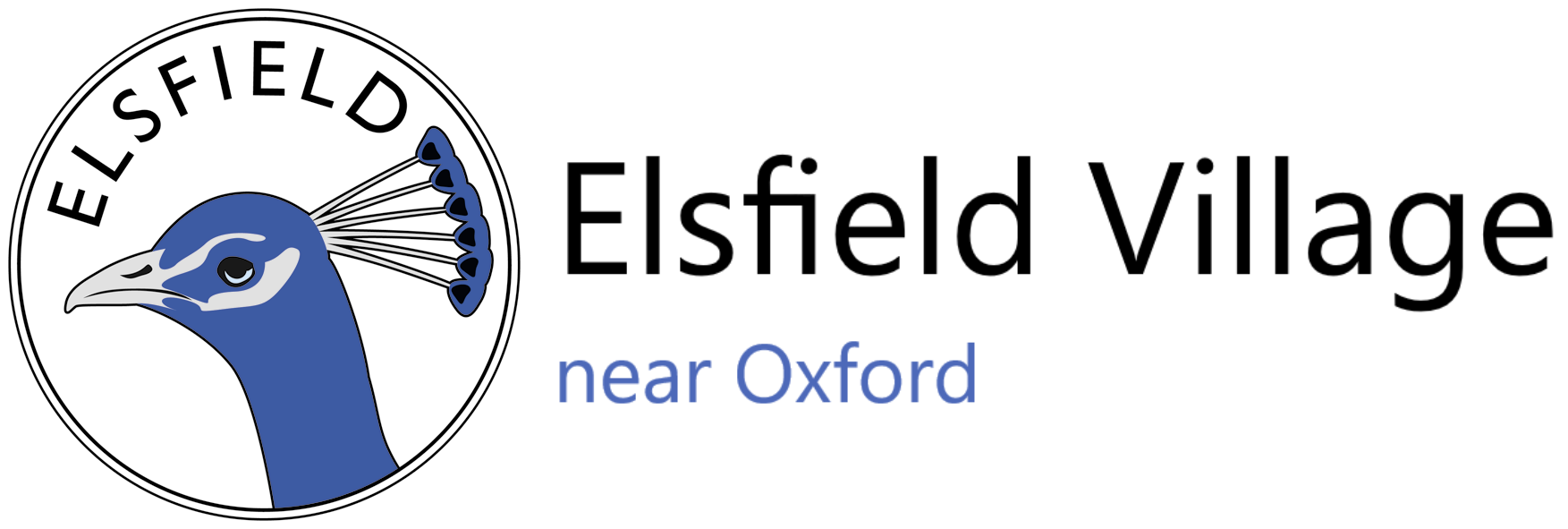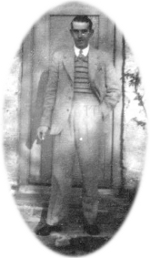
George Hambidge outside 1 Post Box Cottage
Most of the village residents were connected with farming in one way or another. A working day on the farm started early as it still does today. When young George Hambidge went to work for Jack Brown at Church Farm in the 1930s, he had only to run along the road from Post Box Cottages for the seven a.m. start. He and his friend Denis Lafford had tried to get jobs as messenger boys at the Post Office but only Denis Lafford was accepted and the doctor advised George he would be better working outside in the fresh air, as he had a bad chest. His first job was looking after the eggs which were incubating, and when the chickens had hatched, to move them into the big shed. After working with the chickens he was moved to Sescut, riding his bike down to help the head cowman, Mr Footitt, look after the calves. After their early start all the farm hands stopped for what they called their lunch at nine a.m., a half hour break when they ate sandwiches. They then worked till noon, dinner time, and resumed work in the afternoon until evening.
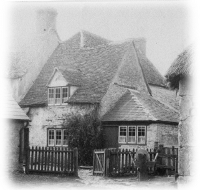
Sescut Farm
Sescut is beside the River Cherwell and is the site of a medieval corn mill. At one time there was a ferry to get across the river which could be pulled across by chain, but before the Second World War there was a punt because the water was fairly shallow. Once when George Hambidge and his fellow workmates were crossing the river, they rocked the boat and all fell in. One of the farm hands, Mr Higgs, stood in the river with water up to his chin but managed to keep his hat dry. During the war, Italian POWs dredged the river to a depth of ten feet, like all the rivers in Oxford, to prevent flooding, and it was no longer as easy to punt across.
Nationally, there had been a serious slump in the price of agricultural products following the Wall Street crash in 1929 and so concerned was the government that Marketing Boards for agricultural products were set up, the most successful being the Milk Marketing Board. This was established in the early thirties, its aim being initially to restrict imports, though its responsibilities expanded and it became involved with production, pricing and marketing. It is no surprise therefore that, since dairy farming was a predictable branch of agriculture, besides the milking herd at Sescut, there were two others in the village. A cowman for Mr Watts, by the name of Lockston, lived at Forest Farm. The cows were milked morning and evening at Hill Farm, but pastured at Forest Farm. This meant they had to walk the length of the village twice a day which resulted in a very muddy road splattered with cow muck and lacking any vegetation on the banks because they had been grazed bare by the cattle.
England became a pastoral economy in the inter-war years, turning from wheat production to dairy farming and sheep, potatoes and sugar beet being also important crops. In his 1936 survey of land use in England, Douglas Stamp showed that Elsfield was in an area which included arable land, fallow and rotation grass for livestock. There does not appear to have been any sugar beet grown in Elsfield but one of the crops grown for animal feed in winter was mangolds or mangel-wurzels. These are a kind of beet with a large yellowish root which are easily pulled out of the ground. Once pulled, they were earthed up to keep them edible during the winter for winter feed. Before being fed to the cattle they were put into a machine which sliced them up into pieces the size of a fish finger. Horses were important on the farm not only for ploughing but for carrying such things as animal feed around the fields. Wilf Lafford was head carter for Mr Watts at Hill Farm. Up at four in the morning to feed, water and groom the horses, the head carter ranked high in the agricultural hierarchy. If there were a problem with the horses, Mr Paintin was the person to ask. He worked for Mr Watts at Hill Farm who thought he was as good as a vet. What Paintin didn’t know about animals, said Mr Watts, wasn’t worth knowing. The vet was occasionally called in, however, and would cycle up to Elsfield from Marston. Mr Paintin spent much of his spare time doing freelance work castrating horses. Because of the number of horses employed on the farms, there was a blacksmith. His forge was at Forest Farm, in the building which now houses the music room for the Montessori school. There was little mechanisation, even as late as the 1930s, though the reaper-binder, which had been introduced earlier in the century, was in common use and horses were used for ploughing throughout the war years.
In the 1930s and 40s, many people in the village kept chickens and pigs and one can still see the remains of well built brick pig styes in some gardens even now. Families usually had two pigs, one to fatten up for themselves and one to sell. The pigs were not taken away to be killed. They were dispatched in the garden by the butcher who would arrive on his bike and stick the pigs there and then. George Hambidge recalled that very little was wasted. The blood was caught and made into black pudding and the carcass was chopped up into joints which were put into lead-lined salt trays in the shed at Post Box Cottage. Saltpeter was rubbed in to preserve the meat and after a time the joints were taken out and dried. Almost every family would have a big ham at Christmas
There are a great many apple trees in Elsfield, and often a glut in the autumn. At the Manor, Lady Tweedsmuir made sure that apples were stored for the winter. The stable block, which is now a house, had racks for storing apples and the smell remains in the memory of one Elsfield man Arthur Phipps, now in his eighties.
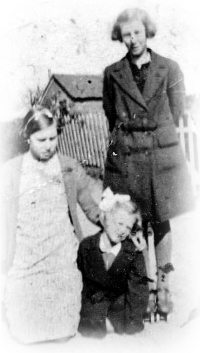
Mabel Chaulk with Helena and Phyllis
Mabel Chaulk, who at the age of fourteen went to work for the Buchans as housemaid, was one of the six children of Frederick Chaulk, ploughman for Jack Brown, recalls aspects of her childhood in Elsfield. As children, they would know when their father was coming home because he always sang – often hymns and “I’ll take you home again, Kathleen”. He looked after three horses: Captain, Deddington and Queenie. Initially, the family lived in a bungalow at Sescut before moving to a cottage opposite the Manor. Frederick, who had survived the battle of the Somme in World War One was a proud member of Marston British Legion. He carried the banner, and his children used to clean the brass pole. Mabel links two events: her father joining the reserves in World War Two and having to move to Marston from their tied Elsfield cottage, but it is difficult to see how these two events can be linked, as her father could perfectly well have been on the reserve list without losing his job.
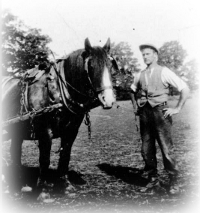
Frederick Chaulk, carter in the 1930s
Before that, however, Mabel and her siblings enjoyed all the village events. On Bonfire Night, there would be a bonfire. The children would go wooding in Long Wood and Woodeaton Wood. Potato planting and picking was a time when all pitched in to help dad and the Browns (the local farmer). They would steal swedes from the fields, which they cut into rings and dredged with sugar in the belief that the juice would cure a bad cold. They also took fruit from the garden of Pear Tree Cottage which was in ruins and has now completely disappeared.
Mabel’s mother was ill on several occasions and twice had to be rushed to hospital. The Buchans were very kind, allowing Mrs Charlett their cook to make extra lunch and provide the Chaulk children with big milk puddings. They used to watch her skim the milk and make butter balls.
Mr Gatts, the baker from Beckley, delivered daily and Bayards, the fishmongers from Oxford Market, would also visit the village. The children would go out mushrooming and offer them to Mr Bayard for extra pennies.
The Second World War expanded Mabel’s horizons in a startling fashion. Instead of domestic work, she became a welder and riveter at the Morris factory at Cowley which was by that time making tanks. Mabel met her husband-to-be, Stanley Marsh, in St Giles and they were married in Marston Church in 1942. The vicar of Marston, the Reverend Mortimer, rang the bells, played the organ and took the service, then waived the fee and said it was his wedding gift.
Two Houses
Two descriptions survive of the interiors of houses in the village in the 1930s and they show the differences between rich and poor, living within a few yards of one another.
The Manor
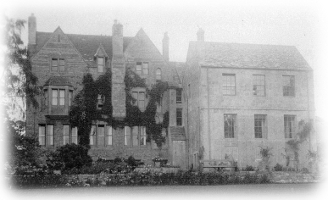
Elsfield Manor
A 1932 copy of the life-style magazine Homes and Gardens features the Manor House occupied by the Buchan family. The article describes the interior:
“Entering from the porch, you come into a fine hall, lined with white-painted panelling, and at the end of it rises a staircase of Georgian type with triple banisters on each tread.’ In the drawing room, which has an air of ‘simple dignity’, there are one or two pictures, an Hondecoeter above the mantelpiece and a Poussin on the end wall – and Georgian style lighting fittings.”
More interesting to the writer of the article appears to be the library, which is in the Victorian half of the house, the part built by the Parsons family. Here there is a marble mantel, enormous book shelves stretching from floor to ceiling, a writing desk of generous dimensions and a beamed ceiling, originally painted blue with gold stars “but now discreetly made as neutral as possible”. The study on the first floor, an addition built by John Buchan, and where he did most of his writing, had an Aubusson carpet on the floor, windows which look west towards the Cotswolds and Georgian writing desks.
Post Box Cottage
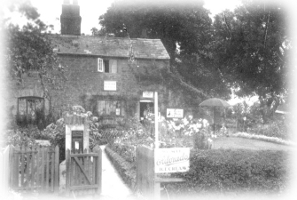
Post Box Cottage
In contrast, George Hambidge, the youngest of eight children, remembers the cottage where he lived from 1923 when his family moved form Kelmscot. His father, having heard that Mr Hatt at Church Farm was paying more than Mr Hambidge was earning at Kelmscott, was given the job at Church Farm. Mr Hatt had a cold bath every morning and his bellow when he stepped into the water could be heard along the village street. The Hambidges’ house was called Post Box Cottage because Mrs Hambidge, a woman of great energy and resourcefulness, ran the Post Office and shop from there. The cottage was reconditioned in 1957 and certainly needed it. Before that, Post Box Cottage had rickety stairs and was so damp it was difficult to keep the wallpaper on the walls. There were three bedrooms and the stairs went straight into the first bedroom.
Mrs Hambidge sold lots of things, including postcards with views of Elsfield. There was a cigarette machine by the gate which George had to fill up. A packet of 20 Players cost 11d so you put a shilling in the machine and there was 1d change taped to the packet. A notice said ‘Teas’. People used to come up from Oxford in summer. The shop sold ice-cream and people loved to sit on the lawn and have tea. There was a damson tree in the garden loaded with fruit in the autumn and a Victoria plum. The damson was cut down before the Hambidges left.
In the shop, there was a lovely cupboard made by the carpenter at the Manor, Mr Hemmings. Mrs Hambidge kept cakes in that. It was possible to order things, and she could get anything for people within the week. She dealt with Grimley and Hughes in Cornmarket Street for groceries and Cooper’s for hardware. In the shed, there was a big tank for paraffin, which was used for heating and lighting. They also kept dog biscuits and chicken feed there for sale in the shop. The shop took up half the living space and was separated by a partition from the living room and never closed. Mrs Hambidge used to complain sometimes, but people called whenever they needed things and they would come to the door at any time. She would extend credit to the end of the week when wages (approx. £3-5s) were paid.
Mrs Hambidge cooked on a double Valor stove with two burners below an oven, all fuelled with paraffin, which may have been the reason the cottage was so damp, as paraffin produces a great deal of water vapour. In the summer, she had a fire outside. She would put meat and vegetables in one big cast iron pot and cook over an open fire. There were two hobs with bars across. The fire underneath was wood or anything else that would burn. The family had most of their Sunday dinners out there because it saved having extra heat in the house and there was more room in the garden than the house.
There was blue aubretia planted all the way up the path on the left and white flowers up the right hand side. There was a chicken run behind the house and Mr Hambidge, who was a keen gardener, grew lilies.
